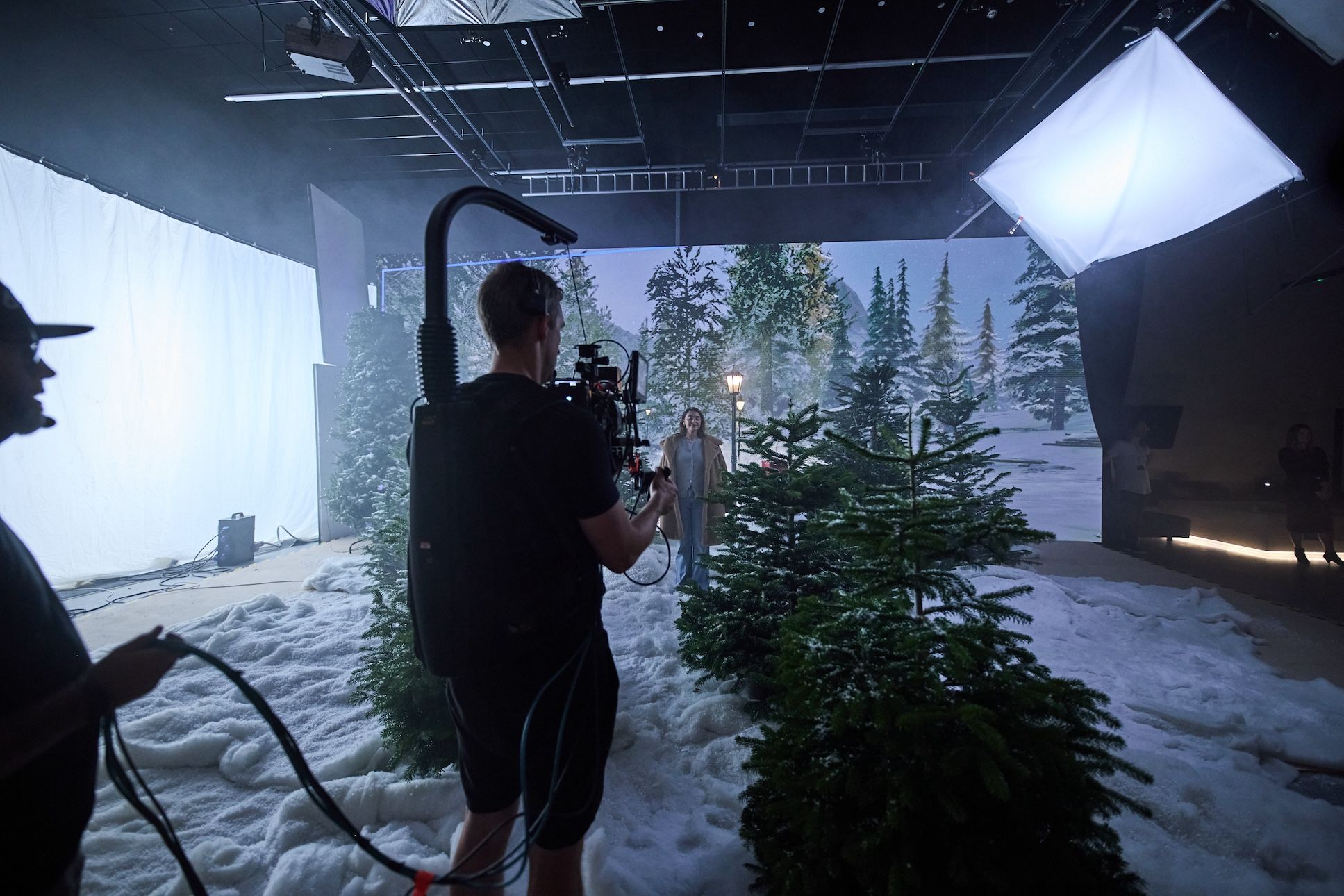Resource Type: Blogs
Tag: Studios
Tag: Creative content
BLOG
What is Virtual Production? A Guide for Creatives and Marketers
You’ve probably heard the term "virtual production" (VP) buzzing around, especially after seeing the stunning, otherworldly landscapes in series like The Mandalorian. But this technology isn't just for big-budget Hollywood productions anymore.
It's a game-changer for brands, marketers, and creative agencies, revolutionising how content is made.
September 1, 2025


Resource Type: Blogs
BLOG
What is Virtual Production? A Guide for Creatives and Marketers
You’ve probably heard the term "virtual production" (VP) buzzing around, especially after seeing the stunning, otherworldly landscapes in series like The Mandalorian. But this technology isn't just for big-budget Hollywood productions anymore.
It's a game-changer for brands, marketers, and creative agencies, revolutionising how content is made.
September 1, 2025
So, what exactly is it?
Virtual production (VP) is a process that merges traditional filmmaking with cutting-edge technology, blending physical and digital elements in real-time. Instead of relying on green screens and adding visual effects in post-production, VP uses massive, high-resolution LED walls to display dynamic, photorealistic backgrounds during the shoot.
This allows directors, actors, and the entire crew to see and interact with the virtual environment as if it were real, creating a seamless and immersive experience.
How Does It Work for Production Teams?
For production teams, virtual production represents a shift in workflow, moving much of the creative and technical work to the pre-production phase. Here’s a breakdown of the core components.
Technology Description
LED Walls (The Volume) - These are large screens that display the virtual environment. Unlike green screens, they emit light and create realistic reflections on actors and props, making the scene far more believable.
Game Engines - Real-time rendering engines, like Unreal Engine or Unity, are the brains behind the operation. They generate and control the 3D environments displayed on the LED walls, allowing for instant changes to lighting, weather, or even the entire location with a few clicks.
Camera Tracking - A specialised system tracks the live-action camera's position and movement. This data is fed into the game engine, which adjusts the background's perspective in real-time to match the camera's point of view, creating a perfect illusion of depth and parallax.
In-Camera VFX (ICVFX) - This is the magic of capturing the final shot, with both live-action and virtual elements, directly in the camera. This drastically reduces the need for extensive post-production compositing. This front-loaded process means that visual effects, set design, and cinematography are all collaborating from the very beginning.
The Virtual Art Department (VAD) - Builds the digital assets and worlds first, allowing for "virtual scouts" and extensive pre-visualisation (previs) before anyone even steps on set. This level of planning and real-time feedback on set gives creative teams unprecedented control and flexibility.
The Benefits for Brand & Marketing Teams
For brand and marketing managers, the "why" of virtual production comes down to a powerful combination of creative freedom, efficiency, and impact.
Unleash Creativity
Imagine shooting a car commercial that seamlessly moves from a sun-drenched beach to a futuristic city, all in a single day, within the same studio. Virtual production removes the constraints of physical locations and logistics, allowing for limitless creative possibilities. You can create surreal, abstract, or impossible environments that truly capture your brand's narrative.
Speed to Market
Traditional content production involves lengthy timelines for location scouting, travel, set building, and post-production. VP significantly shortens this cycle. With real-time rendering, what you see on set is essentially the final product, allowing brands to approve content on the spot and get campaigns to market faster.
Cost-Effectiveness
While the initial setup can seem high-tech, virtual production can lead to significant cost savings. By eliminating the need for travel, location permits, and extensive set construction, budgets can be reallocated to higher-value creative elements. Shooting multiple "locations" in one studio day also maximises efficiency.
Brand Consistency
Virtual production offers complete control over the environment. That "golden hour" light can last all day, ensuring perfect shooting conditions. Digital assets can be saved, reused, and adapted for different campaigns or markets, ensuring brand consistency across all video content. For global brands, this means you can film content for various regions by simply swapping out the virtual background, all from one location.
Sustainability
In an era where ESG (Environmental, Social, and Governance) is a key concern, virtual production offers a greener alternative. By reducing travel for cast and crew, minimising physical set waste, and lowering energy consumption associated with large-scale location shoots, brands can significantly decrease their carbon footprint.
By leveraging virtual production, marketing teams can create more ambitious, visually stunning content faster and more cost-effectively than ever before. It's a powerful tool for storytelling that can help your brand stand out in a crowded digital landscape.
Ready to transform your next shoot?
If you're ready to discuss how Virtual Production could transform your next shoot, click here.